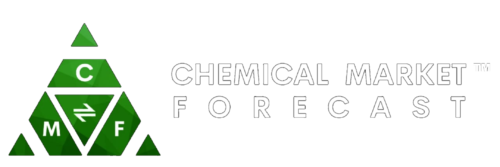Advanced materials are materials with unique or superior properties compared to conventional materials. These materials are being developed at an increasing rate. Advanced materials enable technological innovations that can provide value to society. Automotive, aerospace, and electricals as well as electronics are only a few of the industries that use advanced materials extensively. These materials are also used in medical equipment, the power industry, and automotive applications. In 2015, the global advanced materials industry was worth USD 42.76 billion. Between 2016 and 2024, this industry is expected to grow at a CAGR of 10.4%, reaching USD 102.48 billion. The demand for advanced materials is expected to grow during this period due to the rising requirement of advanced materials.
Growth of the advanced materials sector
Advanced materials can be segmented into polymers, glasses, composites, ceramics, etc. These materials have several important properties including stiffness, excellent fatigue, abrasion resistance, and high specific strength. Ceramics are widely used for various medical applications for the past few years. The fact that composites can be mass-produced to meet specific requirements and have a wide range of applications is a major factor for their high demand. This trend is expected to continue to increase in the coming years.
The automotive industry is currently struggling with growing demands for fuel efficiency and pollution reduction. As a result, there is a lot of interest in using the endproducts of this sector to make lightweight vehicles. Due to constant advancements in cell phones and laptops, the electrical and electronics industry is a rapidly growing industry. These factors majorly contribute to the growth of this pipeline industry.
Due to climate change, there is an urgent need for businesses and governments to look for eco-friendly manufacturing techniques. The industry is transforming the global manufacturing process. This is accomplished with the replacement of metals and plastics with ceramics along with composites in high-performance applications.
Market drivers
Evolving Aviation sector
The aerospace industry is constantly progressing owing to the high requirement of new materials to replace the existing ones. The composite parts of aircraft are characterized by their processing, manufacturing specifications, and material. The number of carbon fiber reinforced polymer (CFRP) used in their structure is just marginally less than the number of metals used. Various reinforced matrices are used in addition to these. Aluminum became the preferred material as the aircraft industry witnessed a rise.
Growing demand for electric vehicles
The automotive sector has been the leading market for advanced materials. The global inclination towards electric vehicles will lead to an increase in the advanced materials market over the few decades. As a result, there is a lot of interest in using innovative materials to make lightweight vehicles, such as advanced high-strength steels, non-ferrous alloys, and a variety of composites including carbon fiber. The market will expand as demand for lightweight vehicles increases.
North American advanced materials market dynamics
North America has one of the most productive markets for the advanced materials sector and electronics. This is mainly due to the sophistication with the advancement of technologies and large manufacturing capacity in the region. The American advanced materials industry is dependent on the region’s industrial developments. Different regions are expected to continue to perform differently, with North America continuing to lead the way in terms of growth.
North America invests heavily in this market due to its applications in crucial fields including defense. The properties of a composite are highly influenced by the raw material used and the fabrication process conditions. Furthermore, the expansion of in-house OEMs in the advanced materials sector has accelerated the market’s growth. Any advancement carried out on existing products results in the addition of the modified product to the market. The advanced materials market is expected to witness constant changes due to the emerging technology in all segments. A small number of firms operate in this sector. Their share of research and development spending is projected to affect the overall R&D for advanced materials.
Jushi, Owens Corning, CPIC, Nippon Electric Glass, and Johns Manville are among the major players in the North American composites industry. Owens Corning is the world’s largest producer of fiberglass composites. Around 19,000 employees work for the organization worldwide. The XStrand family of materials was first presented in 2017 at the TCT show in Birmingham. These composite materials were developed mainly for 3D printing. Owens Corning also produced warship insulation, also known as a navy sheet, in 1939. The product was woven continuous fiber cloth over permanent form-board insulation. Angstron Materials is based in Ohio, United States. It is a major player in the graphene industry. The firm specializes in producing nanographene platelets (NGPs). Also, the company produces and exports pristine graphite and single-layer graphene.

